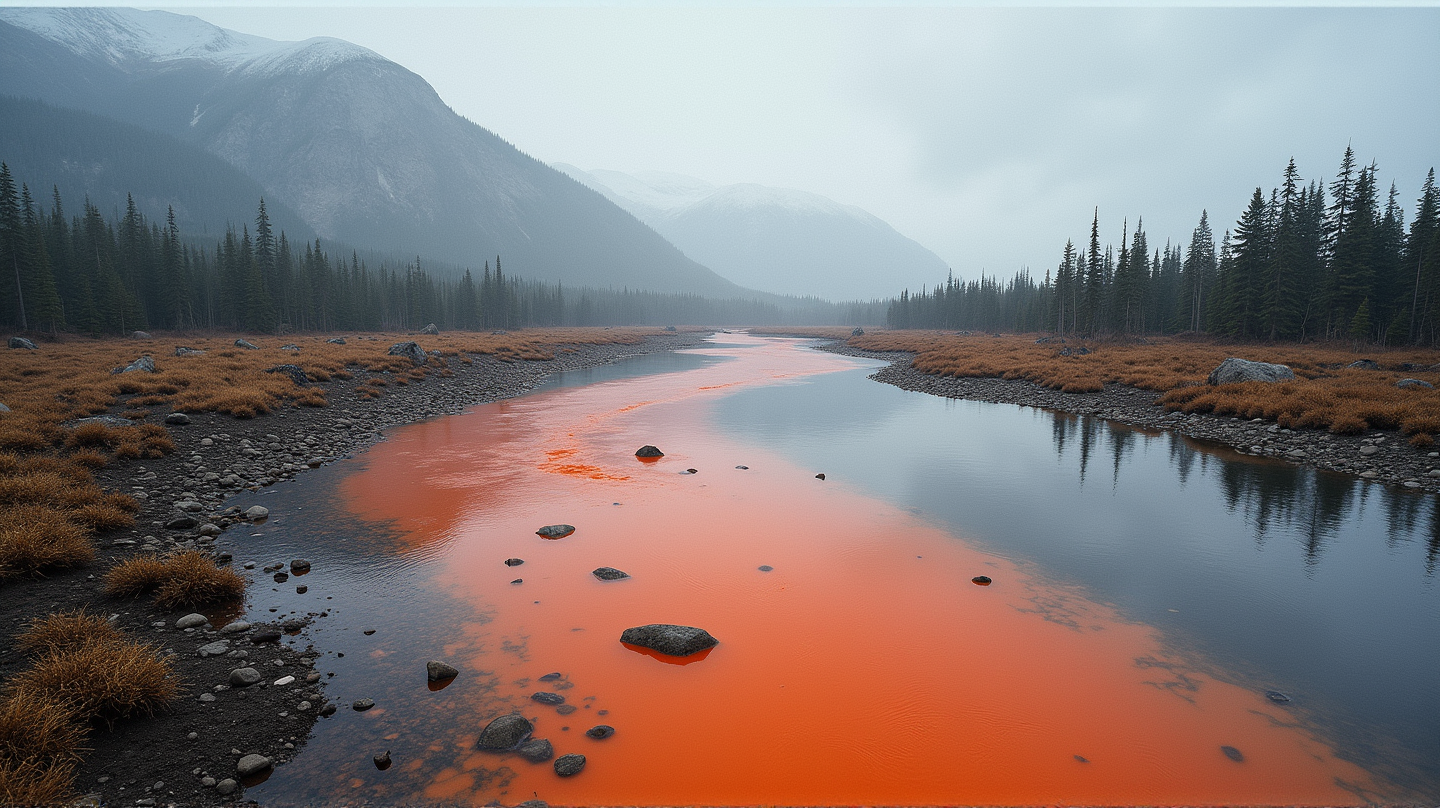In the remote and untouched beauty of Alaska’s Brooks Range, a disturbing transformation is unfolding. Rivers that once shimmered with crystalline clarity have become opaque flows of toxic orange. This unsettling shift is not the result of human activity but a consequence of a warming planet, affecting both the environment and the communities that depend on these waters. According to ScienceDaily, the extent and pace of this change have left scientists racing to understand and mitigate its impacts.
The Permafrost Awakens
For millennia, the Arctic permafrost has been silently guarding its mineral treasures, frozen beneath the icy surface. However, as global temperatures rise, this once-thick layer begins to thaw, exposing long-hidden sulfide-rich rocks to oxygen and water. This exposure triggers chemical reactions that generate sulfuric acid, releasing a cocktail of metals such as iron, cadmium, and aluminum into the streams.
An Unexpected Danger
The appearance of acid mine drainage without the mines is a scenario previously unexpected and now alarming scientists worldwide. These reactions, more commonly associated with industrial processes, are taking place naturally, transforming the landscape and sparking concern. As fish and other aquatic life ingest these metals, the very foundation of the ecosystem begins to tremble.
The Ecological Domino Effect
The increased acidity and metal concentration are devastating not only to aquatic life but also to the larger food chain. Metals like cadmium accumulate within fish organs, posing risks to predators such as bears and birds. Iron-rich waters cloud sunlight from reaching riverbeds, affecting the primary producers and the larval insects that salmon need to thrive. The potential disruption extends to Indigenous communities reliant on species like the chum salmon for sustenance.
A Call for Urgency
Researchers from the University of California, Riverside, and other institutions have raised the alarm, emphasizing that the transformation of these watersheds could be irreversible. Unlike mine sites, where action can be taken, natural watersheds spread across vast, inaccessible terrains, lacking infrastructure for intervention. The only true remedy lies in the impossible task of permafrost regeneration.
Preparing for Future Changes
In response to this pressing environmental challenge, scientists are calling for proactive measures and community engagement to anticipate and manage the impacts. The research, funded by the National Science Foundation’s Rapid Response program, aims to safeguard other potentially vulnerable Arctic regions. Through collaboration, there is hope to buffer against the immediate threats and prepare for a new Arctic reality.
The alteration of Alaska’s once-pristine rivers stands as a stark reminder of climate change’s ubiquitous reach, sparing no corner of the planet. In understanding this transformation, there is an urgent call to adapt and mitigate the profound changes reshaping our world.
